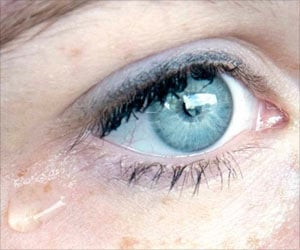New study identifies targets to fight common cold.
A new study has identified targets to fight common cold.
Scientists from Procter & Gamble (P&G), the University of Calgary and the University of Virginia have announced results from the first study to examine the entire human genome's response to the most common cold virus, human rhinovirus.The common cold is the most common illness worldwide, affecting the average global adult two to five times each year. Rhinoviruses are responsible for approximately 30 to 50 percent of all common cold cases. The rhinovirus types are most active in the fall and winter and have two modes of transmission: by touching surfaces that have been contaminated with cold virus and then touching your eyes or nose, or by inhaling droplets of cold virus from the air.
The research confirmed, at the genomic level, that the immune system response to the virus, and not the virus by itself, results in common cold symptoms. Data generated by the study will be crucial in the search for new treatments for the common cold, which is the most common illness worldwide, affecting billions of people every year.
Specifically, the study identifies several categories of therapeutic targets that could balance the immune response in order to minimize symptoms during an infection and potentially even lead to therapies that may prevent infection.
In the randomized, placebo-controlled study, researchers infected 17 volunteers with rhinovirus-16 and an additional 18 volunteers (who served as the study control group) were given a sham inoculation in the form of a nasal saline spray.
After infection, researchers scraped small samples of nasal epithelial cells, which line the passages of the nose, from the volunteers. Rhinovirus-16 and other cold viruses infect these nasal cells, which are the body's first line of defense against airborne pathogens. The researchers then used microarray gene chip technology to compare the gene expression levels between the infected volunteers and the control group.
Advertisement
Forty-eight hours after inoculation, the expression of 6,530 genes in infected volunteers were significantly either up-regulated or down-regulated compared to the same genes in the control group. In other words, rhinovirus infection triggered a massive immune response in the nasal mucosa. Because rhinovirus is not as destructive as other more serious viral infections, this response appears to be disproportionate to the threat.
Advertisement
"This study shows that after rhinovirus infection, cold symptoms develop because parts of our immune system are in overdrive," said Lynn Jump, Principal Researcher at P&G and study author. "The findings are important because they provide us a blueprint for developing the ideal cold treatment: one that maintains the body's natural antiviral response while normalizing the inflammatory response."
Of the many antiviral compounds made by the epithelial cells, one, called viperin, was especially intriguing. The study volunteers produced on average 6.5 times more of the viperin gene product than the control group. Previous work found that viperin helps fend off influenza virus, but the new study is the first in humans to show that the compound also combats rhinovirus. This demonstrates that the body generates a similar antiviral response to the cold as it does to more serious viruses like influenza. The researchers confirmed viperin's role in cold defense with two follow-up experiments, also reported in the current study.
Beyond identifying viperin's role in cold defense, scientists also discovered changes in gene expressions that signaled reductions in the body's natural antioxidant defenses. This finding indicates that replenishment of antioxidants during a cold, through vitamin C supplementation, could help bring the body's natural immune system defenses back into balance. Additional data from the study, to be published in a follow-up paper, looked at correlations between vitamin D levels and cold symptoms. Together, these insights provide fertile ground for further investigating the impact of nutrition on optimum immune system function.
Results of the study are published in today's online edition of the November 1 issue of the American Journal of Respiratory and Critical Care Medicine (AJRCCM).
"Rhinovirus is the major cause of the common cold, but it is also an important pathogen in more serious conditions, such as asthma and chronic obstructive pulmonary disease (COPD)," said David Proud, PhD, Professor, Department of Physiology & Biophysics, University of Calgary and senior author of the study. "The study's findings are a major step toward more targeted cold prevention and treatment strategies while also serving as a valuable roadmap for the broader respiratory science community."
Source-Medindia
GPL/S










